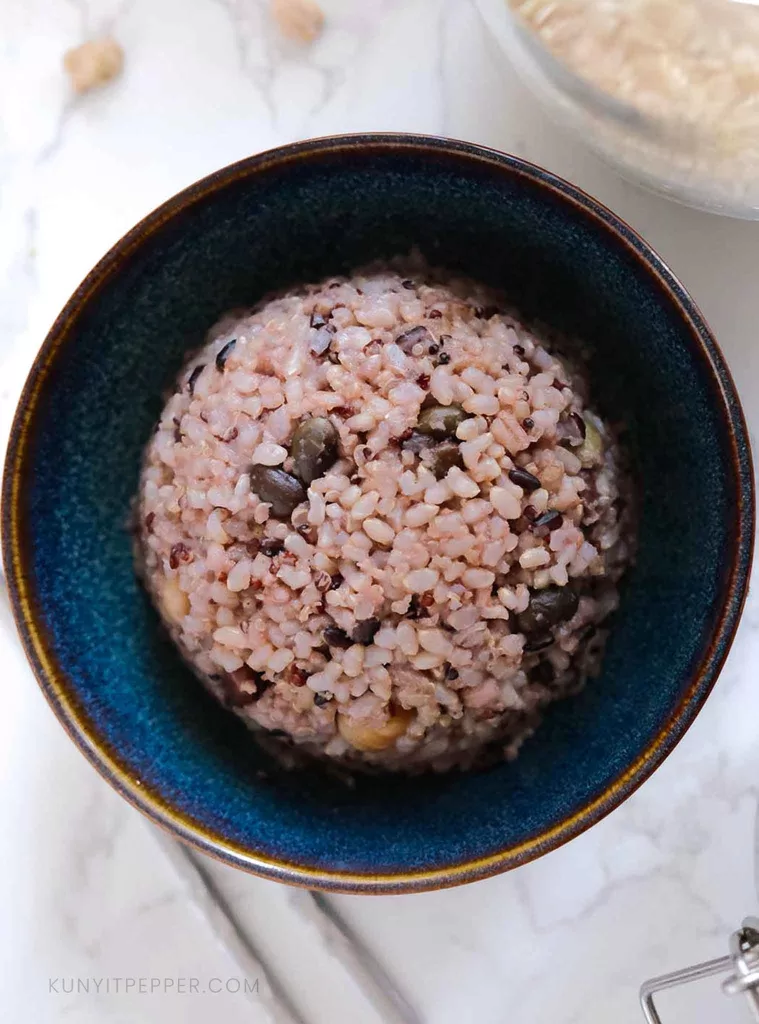
About this multigrain rice recipe
This Korean Multigrain rice in a rice cooker is simple to make, packed with nutrient-dense whole grains, and tasty. The recipe combines eight whole grains and legumes: short-grain brown rice, black rice, barley, millet, quinoa, adzuki beans, black beans, and chickpeas. Easy to cook using a rice cooker, this high-fiber multi-whole-grains recipe gives a ratio of approximately 3:2:1, Rice: Grains: Beans.
Cook Japgokbap with me!
When adopting healthy Asian food, there’s much to learn from the traditional Korean diet. Apart from the high consumption of fermented foods, people in Korea eat various vegetables, legumes, and plant-based foods in their daily meals.
While rice is the primary source of carbohydrates in Korea, they find ways to make the rice healthier by mixing a variety of grains and legumes. Japgokbap is a healthy multigrain rice consumed both on a daily basis and occasionally. It is often served with various vegetable side dishes and kimchi.
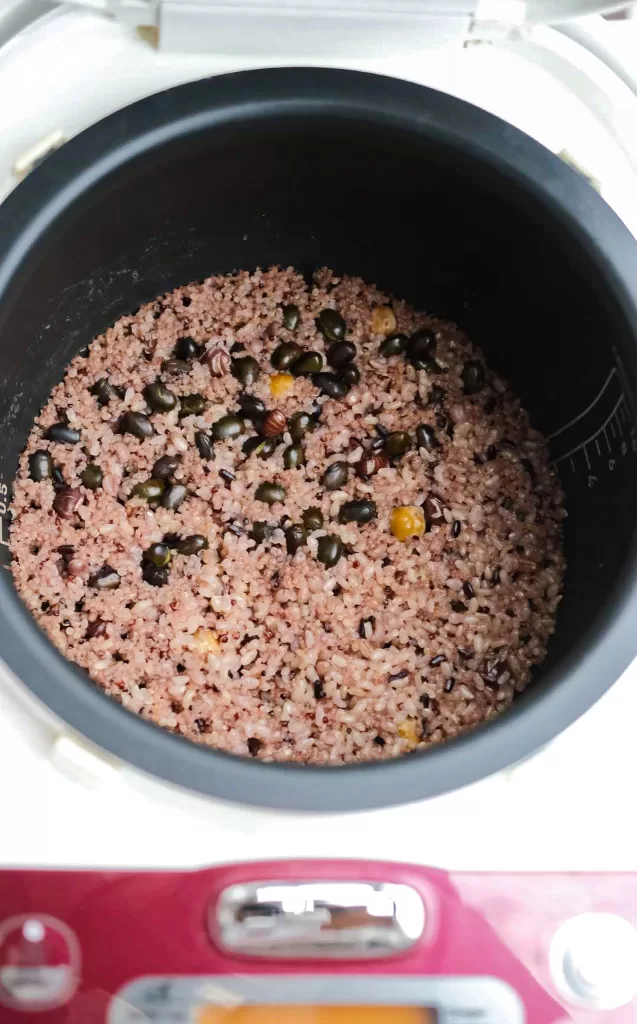
Is multigrain rice healthy?
Yes multigrain rice is healthy, especially the recipe that contain whole grains instead of refined grains. Eating whole grains can offer many health benefits. They are;
High in fiber – Whole grains, such as brown rice, black rice, quinoa, hulled barley, and hulled millet, are high in fiber, which helps lower cholesterol and aid digestion.
Gut Friendly – Some whole grains, such as barley, contain prebiotics that promote gut bacteria and promote healthy bowel movements.
Lower in Glycemic Index – They are an excellent source of carbs that are low on the glycemic index (GI) compared to other simple carbs like white rice and white bread. It means the carbohydrates turn to sugar slowly, causing a slow rise rather than a high spike in blood sugar levels. According to this article from Harvard
“replacing refined grains with whole grains and eating at least two servings of whole grains daily may help to reduce type 2 diabetes risk.”
High in Vitamin B & Minerals – Whole grains are also a good source of Vitamin B and other minerals such as copper, zinc, magnesium, antioxidants, and phytochemicals, which are essential to our body to prevent diseases.
However, it is important to know multigrain rice is still starch and carbohydrates that will turn into sugar. It is best to take it in moderation and eat it alongside a variety of vegetables.
Ingredients to make multigrain rice
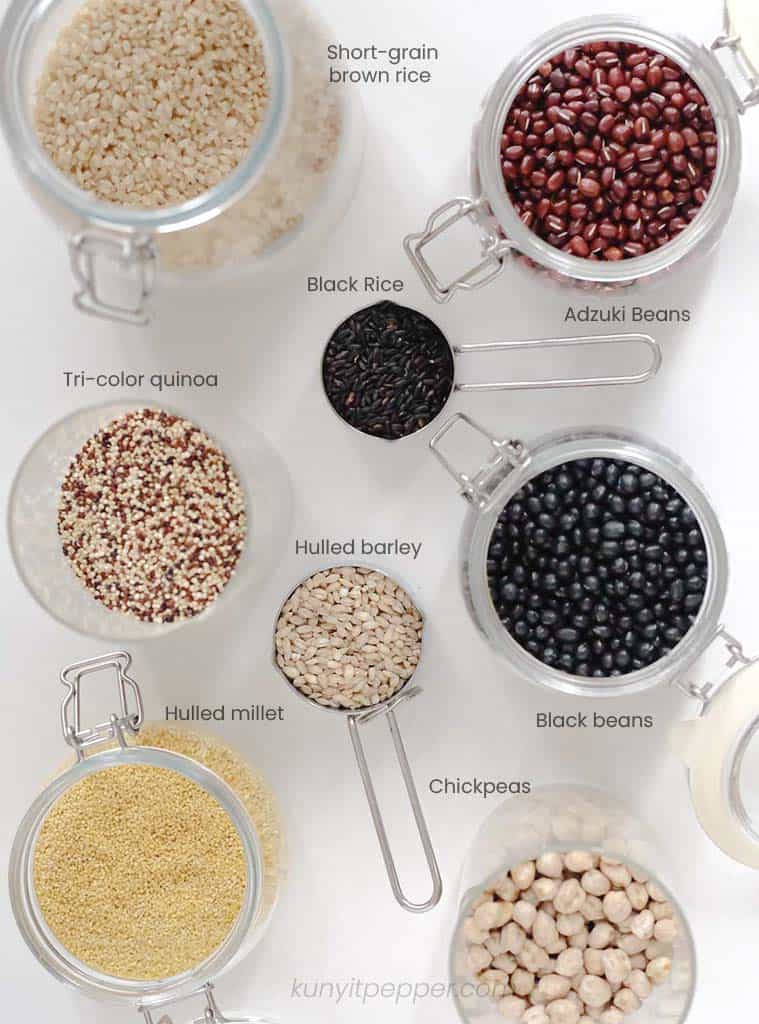
How to cook Korean multigrain rice in a rice cooker?
1. Soak all the beans in water overnight for 12 hours. I soaked them in a different bowl with 1:3, beans: water ratio. Sometimes, some of them tend to float, so make sure they sink at the bottom.
2. On the following day, an hour right before the beans are ready, mix the grains and rice in a bowl. Rinse them a couple of times and soak them for an hour.
3. Drain the water from the mixed grains and beans, rinse, and transfer them to the rice cooker pot.
4. Add water and salt and cook on a brown rice setting. My rice cooker is taking 1 hour to cook.
Is it necessary to soak the beans before cooking?
Soaking beans helps in digestion and reduces the cooking time. It is not necessary to soak the beans overnight, but it is advisable to soak them for at least an hour before cooking. Since I cook this Korean multigrain rice in a rice cooker, I find that soaking it overnight makes the beans perfectly tender to the point that they need the same time to cook with other grains in the rice cooker.
Benefits of soaking the beans before cooking.
1. Reduce the amount of lectin in the beans that cause bloating.
Lectin is another type of anti-nutrients. It is a protein that is found especially in grains and legumes. Some people (like me and my husband) can react to lectin, such as bloating. Soaking the beans helps reduce the sensitivity of lectin and the anti-nutrient activity.
2. Reduce the Phytic acid / Phytate concentration of beans. This results in increasing the ability of our body to absorb certain minerals.
Phytic acid is an anti-nutrient as it can block the absorption of some minerals into the body. It means your body won’t be able to absorb minerals like Calcium, Magnesium, Iron, Zinc, and Manganese when you eat foods with high Phytic acid (Beans). By soaking them, it helps to reduce the phytate and results in increasing the absorption of minerals.
3. Reduce the cooking time.
I’ve tried to soak the beans on their own for 4 hours before cooking them in the rice cooker, it took me around 2 hours for the beans to cook and soften. If you cook the beans with other grains, they will get mushy by the time the beans are cooked. Unless you cook them in a pressure cooker or instant pot, it will take you less time.
Tips
- Try to get the organic ones. Many grains, nuts, and legumes have been exposed to pesticides, herbicides, and fungicides that are harmful to our health.
- Brown rice, especially short grains, needs more time to cook. Pre-soaked them for 1 hour to reduce the cooking time in the rice cooker.
- Black rice needs to be soaked for at least 30 minutes. Soaking them together following this recipe will save you time.
- If you don’t plan to add beans, reduce the water by 1 cup.
Korean multigrain rice in a rice cooker – Japgokbap
Recipe by NudraCourse: Main FoodCuisine: KoreanDifficulty: Easy5
pax1
hour13
hours12
hJapgokbap is a mix of different grains cooked with sticky rice. This recipe combines eight types of whole grains, soaked overnight before cooked in a rice cooker.
Ingredients
1 rice cooker cup of short-grain Korean / Japanese brown rice
1 tbsp of black rice
2 tbsp of hulled barley
2 tbsp of hulled millet
2 tbsp of tri-color quinoa
1 heaped tbsp of Adzuki beans
1 heaped tbsp of black beans
1 heaped tbsp of chickpeas
3 and 1/2 rice cooker cup of water
1/2 tsp of salt
Directions
- Soak all the beans in water overnight for 12 hours. I soaked them in a different bowl with 1:3, beans: water ratio. Sometimes, some of them tend to float, so make sure they sink at the bottom.
- On the following day, an hour right before the beans are ready, mix the grains and rice in a bowl, rinse them a couple of times, and soak them for an hour.
- Drain the water from the mixed grains and beans, rinse, and transfer them to the rice cooker pot.
- Add water and salt and cook under a brown rice setting. My rice cooker is taking 1 hour.
Recipe Video
🥣 Did you try this recipe? Let me know your thoughts in the comment below.

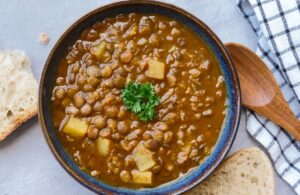
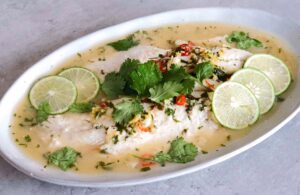
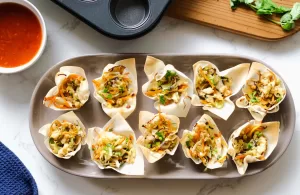
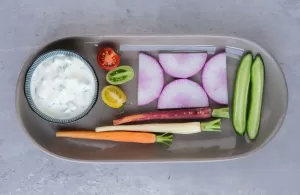
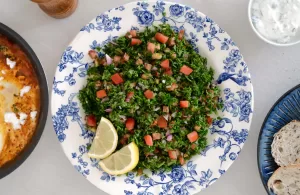


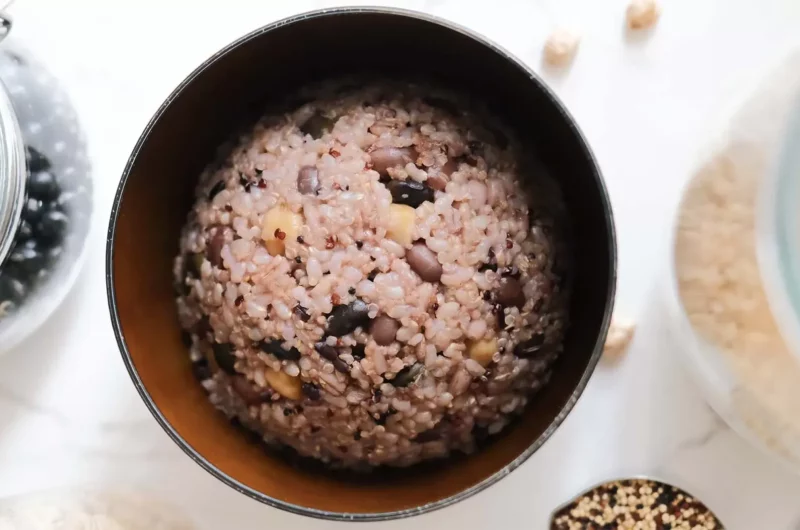

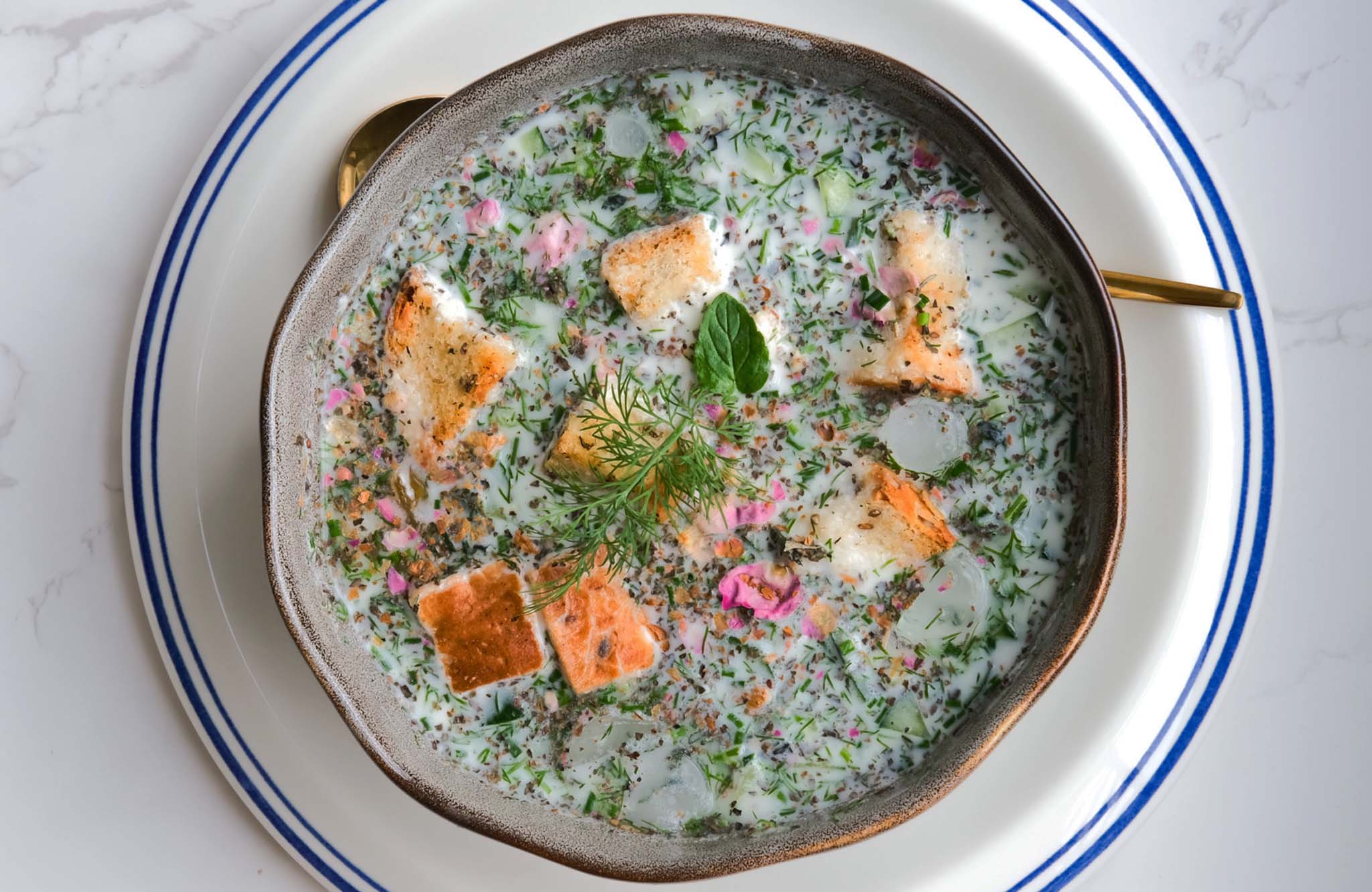
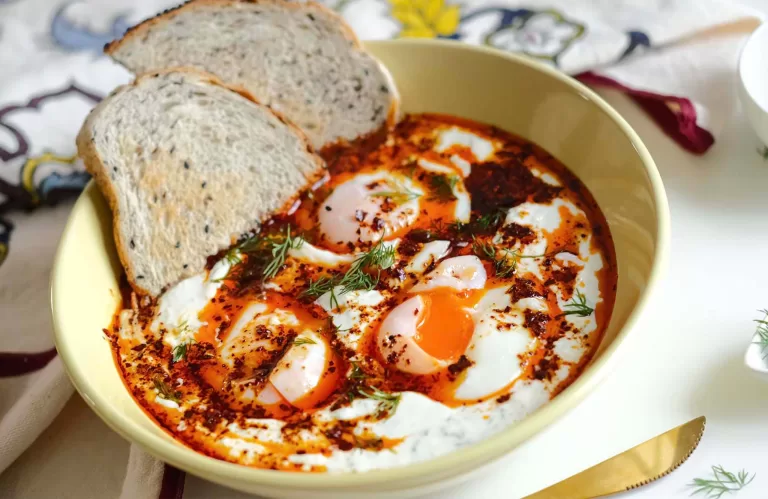

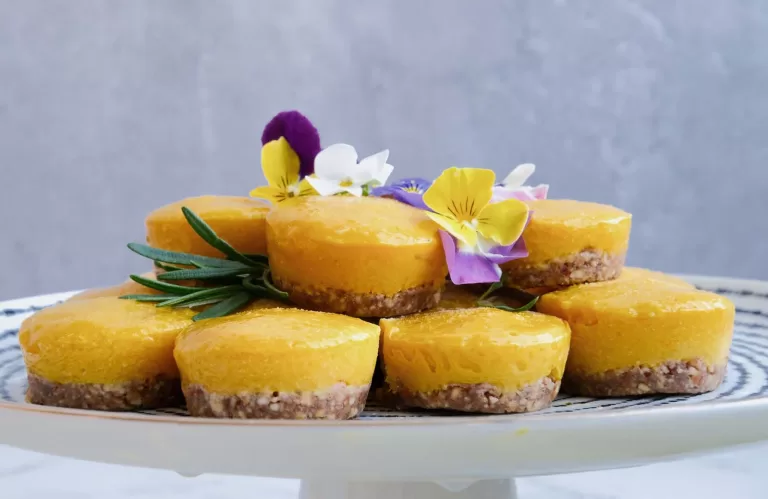
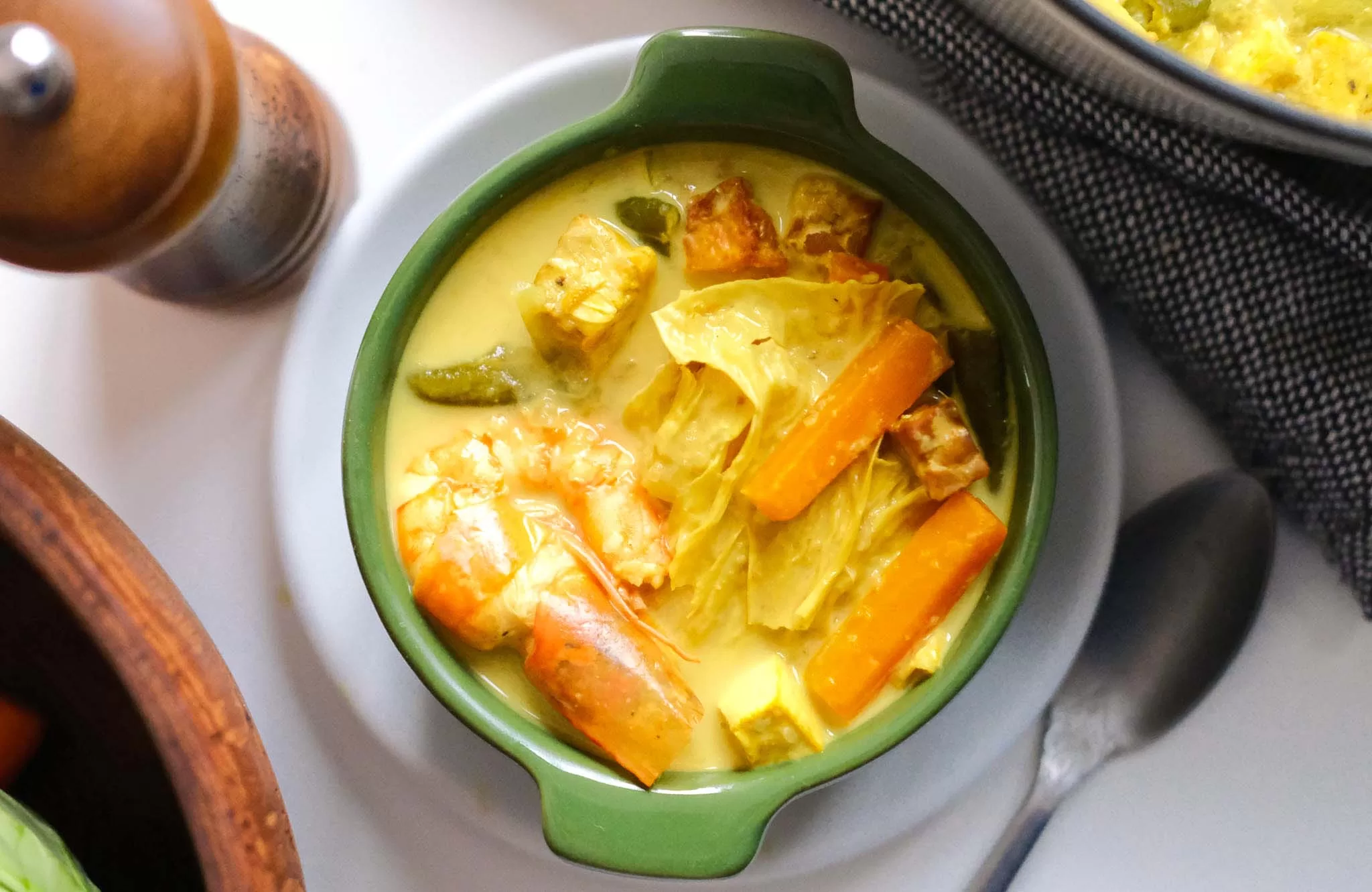
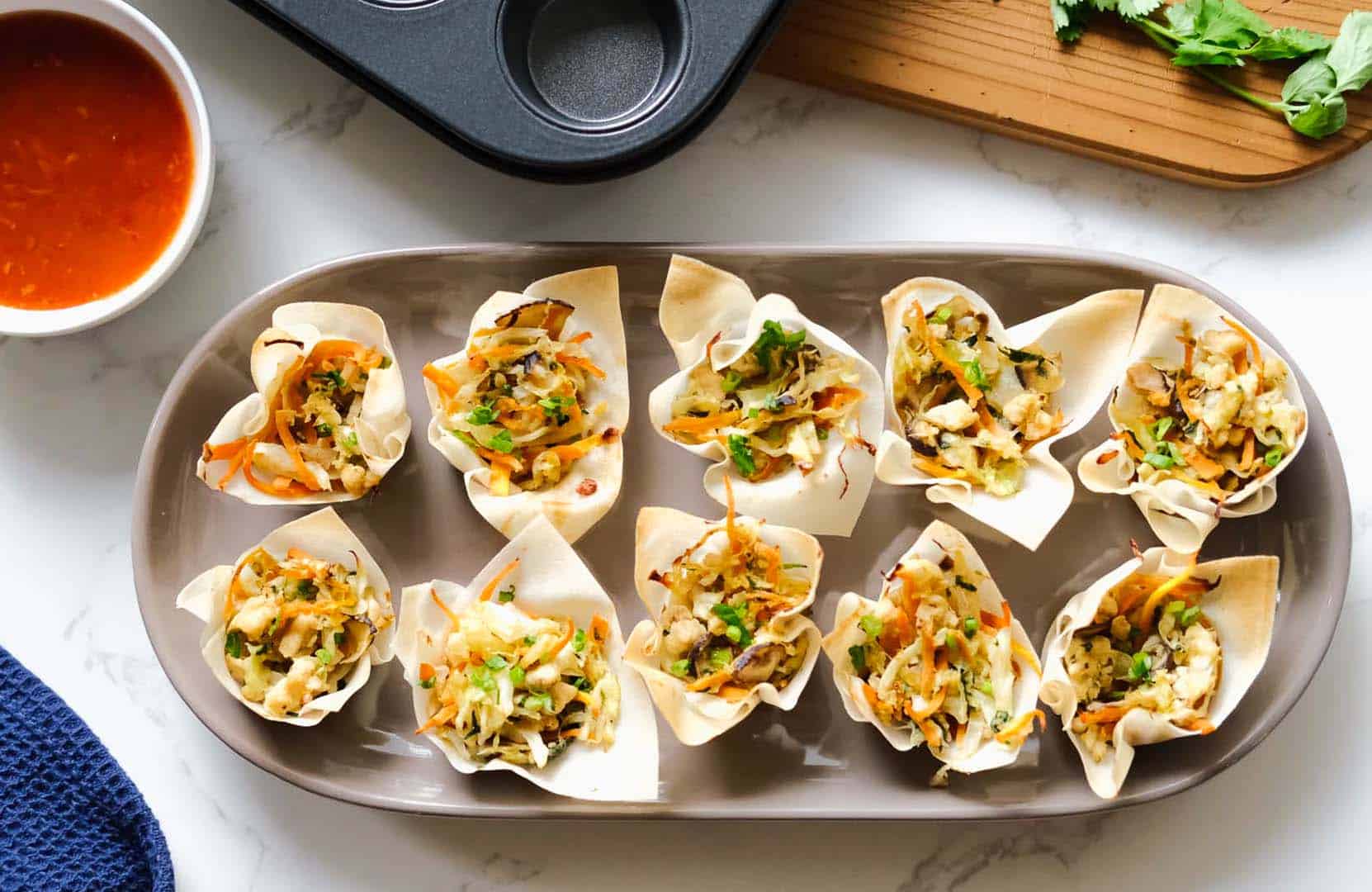
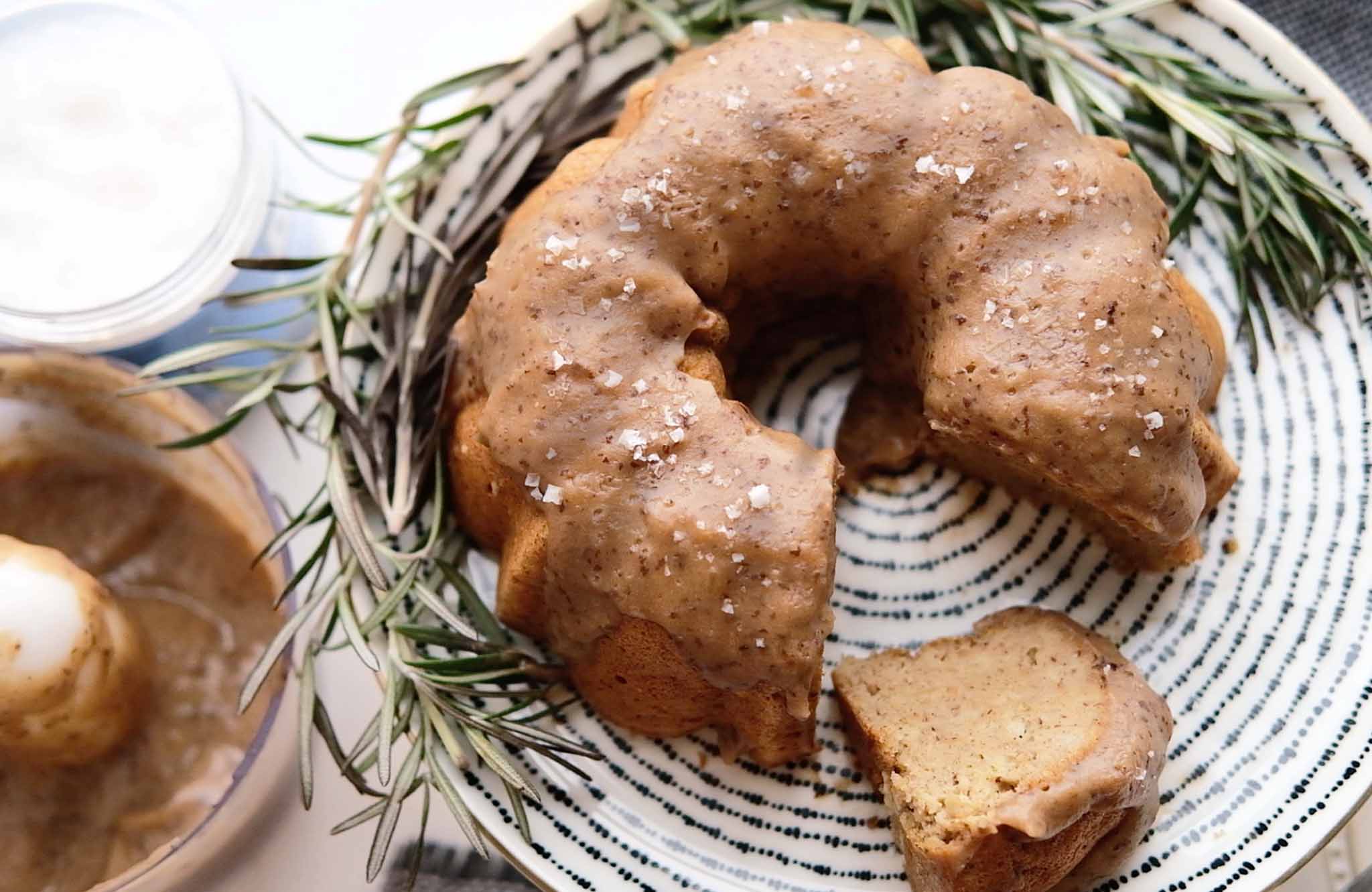
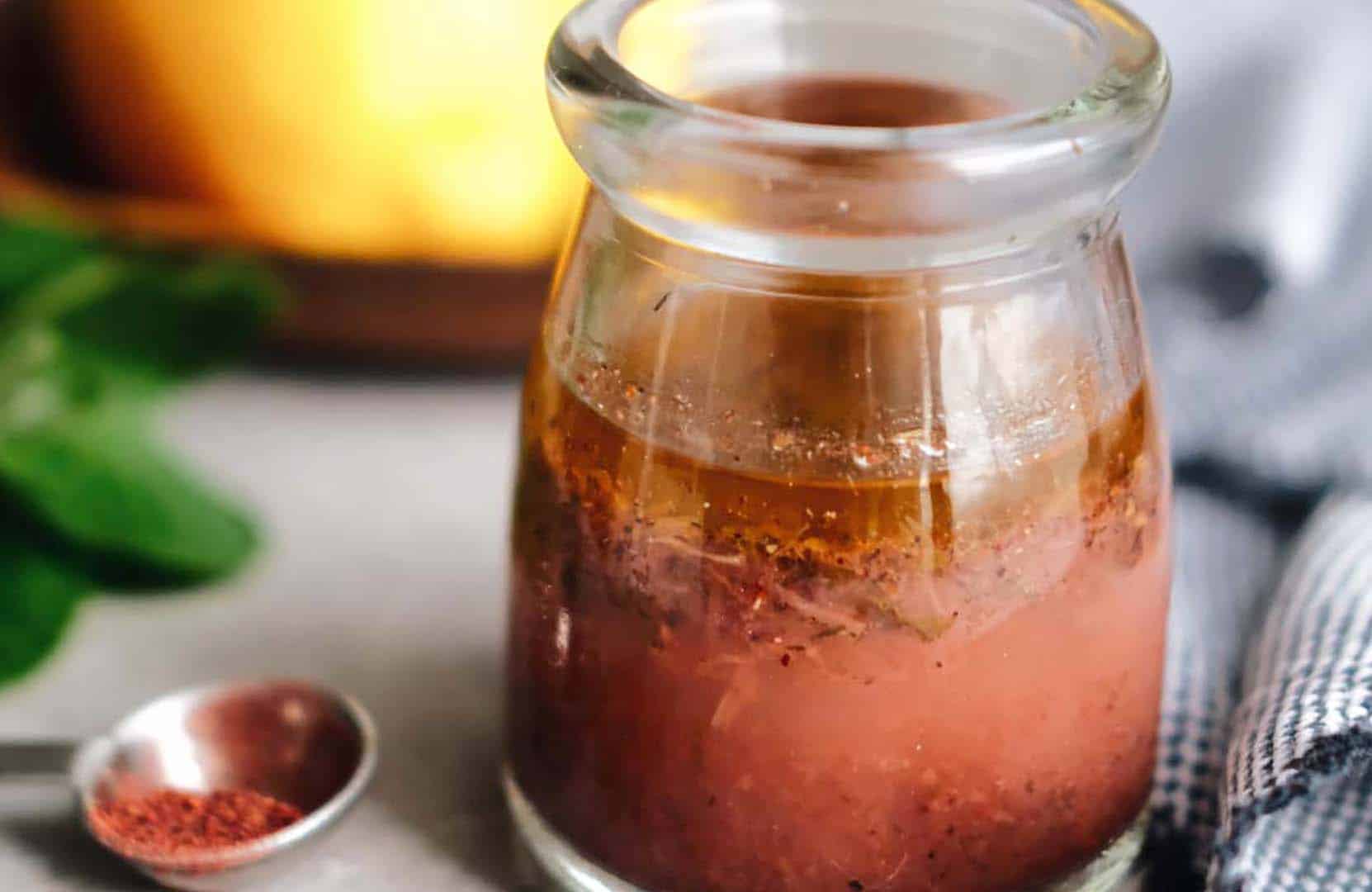
One Response
I tried this recipe and it turned out great! Thanks!